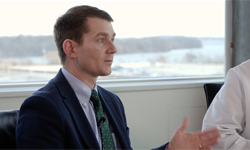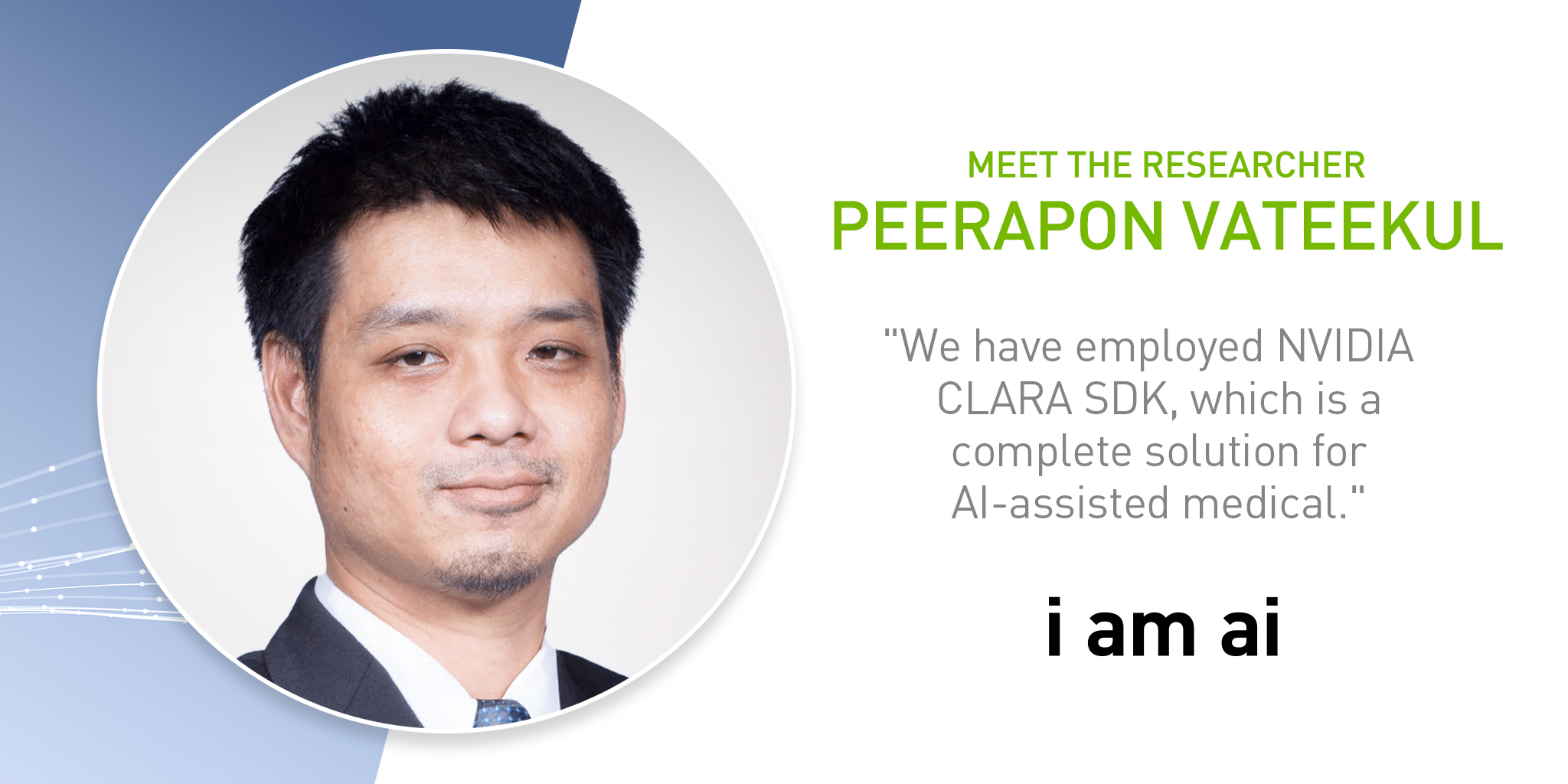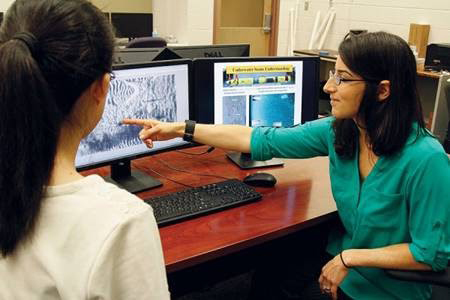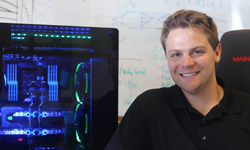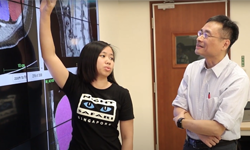‘Meet the Researcher’ is a new series in which we spotlight different researchers in academia who are using GPUs to accelerate their work. This week, we spotlight Dr. John Garrett, an Assistant Professor in the Departments of Radiology and Medical Physics and the Director of Imaging Informatics for the Department of Radiology at the University of Wisconsin-Madison.
Dr. Garrett supervises informatics projects in the department, facilitates access to clinical data and systems for researchers, and develops the computational and storage infrastructure of the department to ensure we are well equipped to perform imaging research. His current primary research efforts are in the areas of improving access to clinical data for researchers, translating novel AI methods into clinical practice, and image reconstruction methods for cone-beam CT perfusion imaging for acute ischemic stroke.
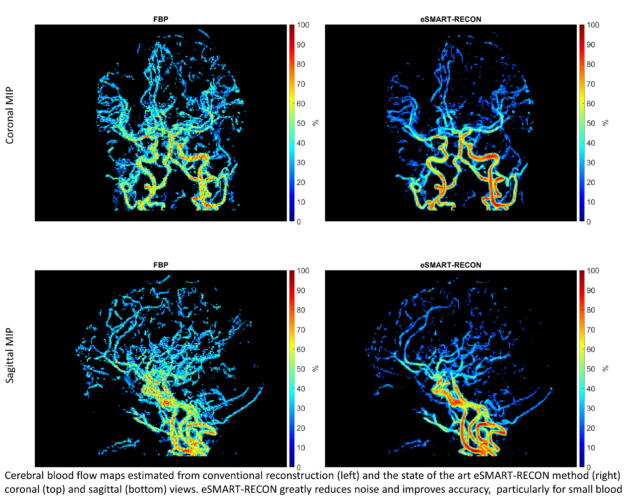
What are your research areas of focus?
As a physicist and the Director of Imaging Informatics for the Department of Radiology, my primary foci cover a range of topics including Image reconstruction and processing as well as Data Science and the translation of novel imaging processes, particularly AI based ones. I am keenly interested in improving ways to develop and curate large datasets for research. One of my primary current areas of research is in direct-to-angio stroke imaging, where comprehensive, but time consuming CT and MR stroke imaging protocols including perfusion may be bypassed and imaging can be performed in the operating room with the patient on the table to shorten the time from imaging to treatment for these patients. My research also extends in the area of Digital Breast Tomosynthesis (DBT), which is a type of mammogram that allows radiologists to look at several thin-layer images of the breast instead of one single image, as in standard digital mammography.
What motivated you to pursue this research?
I grew up in a house of physicians and have been very close to the medical field since my childhood. I also had a keen interest in computers and hardware. In 2010, I had an opportunity to work in the area of medical imaging (updating reconstruction code for nuclear medicine to leverage CUDA and run on GPUs) and found that to be a perfect fit as it brought together technology, medicine and cutting edge applications.
As I mentioned before, my focus is looking at melding AI and digital imaging to provide a better way to help with early disease detection. With the current pandemic, I have shifted my focus to a collaboration with researchers in Medical Physics on predicting COVID-19 in patients using chest X-rays for “opportunistic screening” which allows us to find markers for COVID-19 in patients that may be both symptomatic or asymptomatic for both current and future risks.
What problems or challenges do your research address?
With the AI based screening process we are not trying to replace testing, which is essential, but the issue is availability of chemical reagents and the turnaround time associated with the results. What my team and I are trying to do is provide a quick way to screen patients with high likelihood of COVID-19 and provide a way to help the staff direct the patients to different rooms and follow the right protocols that ensure safety for the hospital staff.
With opportunistic screening, we can identify patients who have early onset of COVID-19 with markers that are perhaps too subtle to see in the X-rays, and find a way to differentiate it from other bacterial infections. Given that there is no prior knowledge on COVID-19, we are using deep learning to build state-of-art-models that can help us in the future.
What is the (expected) impact of your work on the field/community/world?
Ideally, such a tool is invaluable as it can allow every medical center to respond quickly to the needs of the patients without having to wait for test results. This in turn helps protect the staff and the patients alike. Additionally, by collecting data and building deep learning models, we can build tools that aid radiologists to uncover risks beyond the normal markers including mutation. It also helps save lots of time by overcoming the tedious process of analyzing results.
How have you used NVIDIA technology either in your current or previous research?
I have been using NVIDIA technology for quite some time now. I have done work on GTX, Quadro, and Tesla cards for past research projects. Today, my students and I use workstations with NVIDIA P6000 cards as well as the NVIDIA DGX1 for our computing needs. We typically use our workstations to build and then eventually use the DGX system to train our AI models, which has sped up our research considerably. During the development of our COVID-19 detection models, we iterated through more than 150 models and with the DGX system, we were able to run 8 models simultaneously to help us hone in on the right one for our needs.
My team also relies heavily on the deep learning containers such as TensorFlow, from the NGC catalog. We like using NGC containers primarily for their reproducibility and their portability when it comes to deployment. Additionally, with containers, if we want to add a new library we can do so without rebuilding the entire environment. Using containers allows us researchers to focus on our work and not have to spend valuable time setting up environments or hunt down the right dependencies to run our deep learning applications.
With NVIDIA’s hardware and software solutions, we were able to accomplish the project in the timeframe and were able address the needs of their hospital staff by building the COVID-19 screener in a matter of a few months, from concept to deployment.
What’s next for your research?
Our goal is to keep working on the COVID-19 screener and document its behavior and performance as once it fully deployed in the field. We want to take the learnings from this research and apply it to other diseases so we can better understand the disease and triage it accordingly. Additionally, we want to collect more data from the field, improve the model and see how it performs over the course of this pandemic. I also hope we can learn from this research paradigm to be ready to respond quickly in the future to any emerging diseases.
Any advice for new researchers?
If you are passionate about a field, even if it feels that it’s outside your comfort zone, then it’s worth pursuing that and finding your place in that field. Take a page from industry and learn to write code and documentation properly. This can help take your project to the next level either in the form of patents or the adoption of your code by others. Finally, think creatively about how the work will impact the real world problems and ask the research questions needed to achieve that.
Register to join John Garrett and other leading academic and industry experts on Thursday, December 3, 2020 from 9 am-10 am PST, as they discuss their experience with NGC containers in higher education and research.
